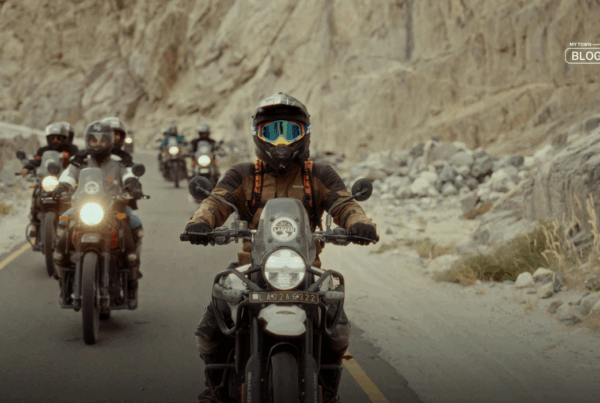Explore the enchanting world of Indian couple wedding dresses, where traditions, opulence, and timeless elegance intertwine to create a visual symphony. From the intricate details of bridal sarees to the regal charm of groom’s sherwanis, this article takes you on a journey through the vibrant tapestry of colors, fabrics, and embroidery that define the essence of Indian weddings. Each ensemble serves as a testament to the diverse cultural heritage, blending tradition with contemporary style. Join us in unraveling the stories of love, culture, and timeless beauty woven into the fabric of every couple’s attire on their special day.
Kashmiri Couple Wedding Dress
Heavy embroidery, beading, and other embellishments are frequently added to heavy lehengas. Elevating their overall beauty and grandeur. In addition, to finish off the bridal look, these lehengas are frequently paired with complementary jewelry. And other accessories like bracelets and earrings. At Kashmiri weddings, brides frequently wear elaborate lehengas in vibrant colors like green, red, or gold, which are auspicious and represent pleasure and prosperity. If the groom is wearing a long, formal coat, or a khan dress, for example, his lehenga might be paired with it.
In Kashmir, males typically dress in the khan attire, which consists of a long, loose tunic paired with baggy slacks. Khan gowns are frequently composed of breathable, light materials like cotton or wool. These gowns come in an array of colors and patterns. Khan gowns are frequently accessorized with turbans.
Himachali Couple Wedding Dress
women’s traditional attire includes long kurtas, Ghaghris, Salwar-Kameez, and Cholis, stemming from the historical purdah system. Brahmin women also adopt similar styles, especially during weddings. Where they showcase elaborate ghagra choli with handmade embroidery. Additionally, both communities favor traditional footwear crafted from grass. And animal skin to keep their feet warm. The overall attire is often accessorized with rings and an abundance of bangles.
In Himachal Pradesh, the community is mainly divided into Rajputs and Brahmins. Rajput men wear tight Churidar Pyjamas with a kurta and a luxurious overcoat made of yak leather and gold threads. They adorn color-dyed, starch-stiffened turbans and consider Himachali topis and mustaches as symbols of pride. Brahmin men opt for kurta and pyjama, sometimes adding a waistcoat or overcoat. Priests wear white attire with a soft towel-like cloth on their shoulders. On special occasions, both groups wear new kurta pyjamas. Embroidered caps, and shawls for a festive look.
Punjabi Couple Wedding Dress
A Sikh bride would typically choose to wear a lehenga or salwar kameez in the customary Anand Karaj Sikh tradition. The ideal colors for these ensembles are vivid pink or rich red, which stand for auspiciousness and prosperity, two very important blessings for the recently weds. Keep in mind that a Sikh bride is not allowed to wear black or white during the wedding ceremony.
Grooms who follow Sikh tradition like to wear Kurtas, which are typically white in color, layered with an Achkan, or long overcoat. Premium materials like silk or brocade are frequently used to make achkans. In addition, grooms now days don Sherwanis over kurtas rather than the customary achkan. And Turban wear is typical among Sikh males,
Rajasthani Couple Wedding Dress
Men in Rajasthan typically dress in dhoti and angarkha, or pyjamas and kurtas.
The dhoti, a long garment, drapes between the legs and knots around the waist like a loincloth. It typically pairs with an angarkha, a kind of robe that distinguishes itself with a chest-covering inner panel.
Women in Rajasthan have traditionally worn an ankle-length lehenga called chaniya choli with a choli on top. The headwear known as a dupatta, sometimes called an odhni or chunar, has a dual purpose in Indian culture by providing shade from the intense sun.
Gujarati Couple Wedding Dress
For the bride, the Panetaar saree, gifted by her maternal uncle, is white with a red border, adorned with zari and stones. The Gharchola, usually a gift from the groom’s side, is a rich red silk saree with zari and bandhani work. The bride wears the Panetaar for initial rituals and switches to Gharchola later.
She follows traditional Gujarati draping and accessorizes with bindis and an array of jewelry like Gala no har, Nath, Bajubandh, Bangadi, Patla, Chandlo, and Chadda.
A Gujarati groom’s wedding day traditional clothing usually consists of a Dhoti and a Kurta. But of days, a lot of grooms choose to wear Indo-Western Kurtas and Sherwanis. It’s customary for the groom to wear a vibrant dupatta with bandhani embroidery around his neck to add some brightness. He frequently accessorizes the look with a similar hat embellished with pearls and other priceless stones.
Uttar Pradesh Couple Wedding Dress
Women from Uttar Pradesh usually wear a sari with a blouse or salwar kameez. The bride typically wears a beautifully embroidered lehenga choli on the wedding day. She’s wearing the dupatta (which she covers her head with) with the lehenga and choli.
The males choose to wear kurta pajama or dhoti kurta. They dress their heads with topic or pagris as well. Men wear sherwani, an embroidered kurta with churidars, on more celebratory events.
Kerala Couple Wedding Dress
Ideas for Christian Wedding Gowns and Christian Wedding Dresses A stunning white Christian wedding dress will look stunning and have thousands of hearts racing. Wearing an exquisite white gown with beautiful embroidery or delicate lace detailing, our Indian Christian brides exude an enchanting elegance.
Christian weddings in Kerala typically require formal or semi-formal attire. The groom usually wears an elegant suit or more traditional clothing such as an achkan or mundu. Meanwhile, the bride typically opts for a white wedding garment or saree.
Conclusion
In summary, India’s diverse cultural and religious backgrounds contribute. To a wide array of traditional attire for couple. From modest kerala Christian attire to the vibrant colors of Punjab and Rajasthan, each region reflects its unique heritage through clothing. Whether in Kashmir’s intricate craftsmanship or Gujarat’s embroidered garments. India’s clothing diversity showcases its rich cultural tapestry and the importance of attire in ceremonies and celebrations.








